What are the fertilizers for the garden
Spring fertilization at the site and dacha
Everything we plant grows well only on fertile land. And when the soil lacks nutrients, there is no need to wait for a bountiful harvest and beauty.
Vegetables and annuals are usually fertilized in the process of growing seedlings and immediately after "moving" to the beds and flower beds.
Perennials, fruit trees, ornamental trees and bushes are important to feed when transplanting, but during the season you should not keep them on a starvation diet.
Each season has its own "diet", because different growing seasons require a certain ratio of basic nutrients.
At the heart of spring fertilizers lies nitrogen, which is responsible for active growth.
No less important in spring is phosphorus, which stimulates root growth, and potassium, which supports flowering and lays the foundation for fruiting.
In autumn, the last two components predominate in dressings and fertilizers, they help plants prepare for the winter cold and survive them safely.
Each of the summer residents has their own preferences.
The older generation usually uses natural organic matter, which in its "fresh" form inhibits the soil microflora and is even capable of burning roots and also contains pathogens and weed seeds.
Therefore, it must be "brought to mind": the manure must be overheated, and the compost must be ripened.
A good alternative to fertilization in the old fashioned way is ready-made organic fertilizing, environmentally friendly and practically devoid of drawbacks. You can buy them in specialized stores.
Organomineral fertilizers begin to work on increasing fertility immediately after they are applied to the soil.
They help structure the soil, increase the amount of humus in it and increase the plant's resistance to many bacterial and fungal diseases.
Mineral fertilizers of the new generation, as a rule, are designed for specific crops or for problem areas of these crops.
In fertile soil, they are quickly assimilated by plants.
"Sticks" do not require special care, have a prolonged effect and gradually release nutrients when watering.
Dry water-soluble fertilizers contain a full range of macro- and microelements necessary for flowers, ornamental plants, vegetable and berry crops, and finally, new forms of liquid root and foliar dressings - the most gentle soil for microflora, usually contain humates and, in fact, are at the same time and fertilizers, and growth stimulants.
However, if you want to achieve noticeable results, do not “brush one size fits all” - each culture (species or family) needs its own diet.
For example, ornamental-leaved plants need a lot of nitrogen, while flowering plants need potassium to ensure long flowering.
Important: many plants are capricious in nature and do not tolerate even minimal errors in the diet, therefore, before purchasing fertilizers, study the tastes of your favorites.
In addition to nitrogen, potassium and phosphorus, which are the basis of the diet, plants need trace elements, and preferably in a chelated form.
These drugs are especially useful for those who are lagging behind in development.
But before choosing a top dressing, determine which element is missing in the soil and which "additive" will be optimal.
They accompany the plants from emergence to the formation of ovaries, accelerating the growth of stems and foliage and making flower ovaries more viable.
Fertilizers in the spring - rules and regulations for introducing
The spring season is considered the most favorable for the application of all types of fertilizers to the soil. This applies primarily to the planting of new plants, which need to create a supply of nutrients, however, feeding already mature plants is extremely important for their normal growth and development. Fertilization is especially important for fruit, berry and vegetable crops. Today there are many fertilizers, dressings and remedies. Of course, on each package you will find comprehensive information on this fertilizer, but it is very important to understand the general principles of fertilizer action.
Choose kaoke fertilizer for spring application
If we talk about organic fertilizers, such as manure or humus, peat, bird droppings and compost, then they are recommended to be applied once every two to three years.
The main advantage of such fertilizers is the ability to enrich the soil with useful microelements. They necessarily contain phosphorus, nitrogen, calcium, potassium and other elements that have a positive effect on the condition of the soil and contribute to plant nutrition. Organic matter very well loosens the soil, improves its structure and is environmentally friendly. However, not all owners of cottages or summer cottages are ready to put up with dirt and odor associated with organic matter.
As for mineral fertilizers, they need to be applied to the soil annually. Despite the fact that mineral fertilizers do not affect the improvement of the soil structure, there is no need to be prejudiced against them. Indeed, thanks to mineral fertilizers, plants receive all the elements necessary for growth, primarily nitrogen and phosphorus. The advantage of mineral fertilizers is the ease of their application, they dissolve without difficulty in the soil, so they are quickly absorbed by plants. Fertilize usually where there are most roots that can absorb nutrients, i.e. not under the very trunk of the apple tree, but around the entire trunk, as far as the branches stretch. After sprinkling, fertilizer must be buried in the ground.
Granular fertilizers are popular and convenient, but take longer to dissolve and affect plants. Powders and liquids will work faster and are usually better dosed and more balanced. This fertilizer is usually dissolved in water and either watered under the roots or sprayed onto the leaves using garden pumps or special spray guns.
The optimal spring rate for a plot of 1 hundred square meters is considered to be the addition to the soil: 200-250 g of phosphorus fertilizers, 200 g of potash fertilizers (replaced by wood ash) and 300-350 g of nitrogen fertilizers (carbamide or urea, ammonium nitrate).
Recently, complex fertilizers are also considered very convenient, with two or even three components in the composition, which enrich the plants with the necessary substances, including microelements. Now gardeners can choose special feeding - for seedlings, decorative deciduous, coniferous, flowering and other types of plants. All of them are balanced, without sediment, made specifically for the needs of specific groups of plants, and are produced in a liquid state.
Liquid fertilizers dissolve well in water and are used as root and foliar feeding. Application of liquid fertilizers occurs during sowing or planting, or together with water during irrigation. Granular nitrogen, phosphorus and potash fertilizers are applied directly to the soil when sowing or planting seedlings, or before digging to a depth of about 20 cm.
It is important to remember that when applying organic, mineral and complex fertilizers, you must strictly follow the instructions on the package, because an exceeded dose can affect plants in an undesirable opposite way.
We hope that our advice will be helpful when choosing a fertilizer. Enrich your plots. We wish you success and big harvests!
vsaduidoma.com
Fertilizers for the garden - how to enrich the soil in spring?
Studying the timing - when to fertilize?
According to experts, the spring season is the most favorable period for applying any kind of fertilizer. It can be organic, mineral, and complex fertilizers for the garden. They begin to enrich the soil with nutrients after the snow melts so that they do not "evaporate" along with the precipitation.
- Landscaping in the village
- Preparing the garden in spring
- Spring garden fertilization
To feed your garden trees, you don't have to wait for the soil around the pillar to thaw. And vegetable crops are recommended to be fertilized before planting.... It is very important to remember that even if you are using the best vegetable garden fertilizer, the amount should be kept in moderation. An overabundance can also negatively affect the condition of plants. When using mineral fertilizers and mixed dressings, the dose must be strictly observed - the rules for using a particular drug are indicated on the packages.
Natural fertilizers for the garden - what is useful in spring?
Organic contains a large amount of trace elements, and it perfectly loosens the earth. In the village, such fertilizers can be found in almost every yard, so their cost is quite low, especially since organic matter is introduced into the garden once every three years.
The most positive effect is observed from humus (rotted manure), which is scattered over the land plot 3-4 weeks before digging up the earth. Also, in addition to manure, organic fertilizers include bird droppings, compost and peat. To enrich the site, it is enough to distribute a ten-liter bucket of humus per 1 m2.
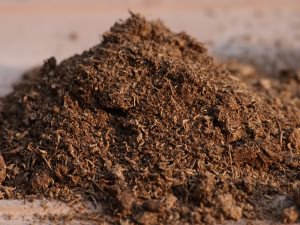
In addition to numerous advantages, natural fertilizers have several disadvantages:
- it will take a lot of physical effort to deliver the required amount of fertilizers to your site and distribute them on the surface;
- specific smell;
- if there is no farm nearby, then the search for organic matter is quite problematic;
- bird droppings or fresh manure can burn the roots of some plants.
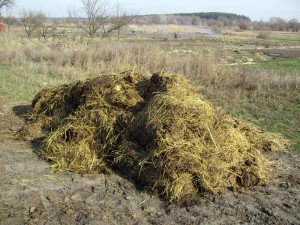
Universal mineral fertilizers - salvation for the garden
There are no problems with the search for mineral fertilizers - they can be purchased in shops for gardeners or on the market. They are sold in a concentrated form, so it is much easier to work with them. The main thing is to be guided by the dosages recommended by the manufacturer. Granular nitrogen and phosphorus preparations are introduced into the soil just before digging.
It is desirable that the granules are at a depth of about 20 cm. Thus, all nutrients will be very close to the root system.
Different fertilizers for the garden, used in spring, perform different functions: organic matter improves the structure of the soil, but mineral fertilizers provide plants with the necessary microelements: phosphorus and nitrogen. But preparations based on potassium accelerate the ripening of fruits.
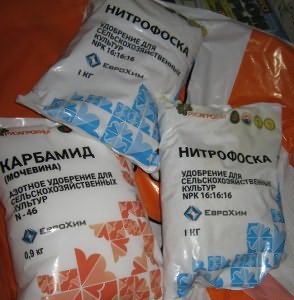
Scheme for the introduction of mineral substances on a plot of land with an area of 10 m2:
- nitrogen preparations (urea, carbamide or ammonium nitrate) - 300-350 grams;
- phosphorus preparations - 250 grams;
- potash preparations (can be replaced with wood ash) - 200 grams.
In the summer period, when plant growth is most intense, soil fertilization is repeated, but the dose is reduced by 3 times. It is very convenient to add nutrients through the drip irrigation system - so you probably will not go wrong with the dosage, and all plants will receive the same dose.
nasotke.ru
Ash as fertilizer - how to use organic matter?
Wood ash as fertilizer - what are the advantages?
First of all, ash is a natural product formed after burning firewood, and therefore you can get it almost free of charge. Its second advantage follows from the first - the use of ash will be safe both for the plants themselves and for people, because "chemistry" will not accumulate in fruits and berries.
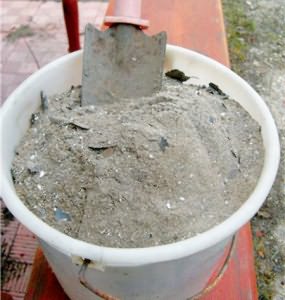
- Fertilization of grapes with ash
- Top dressing of potatoes during planting
- Top dressing with wood ash
The third plus of ash is that it can make plants stronger, reducing their susceptibility to diseases.
There are two fertilization methods:
- The dry mixture is poured into a trench around the perimeter of the tree to a depth of about 15 cm, after which it is immediately covered with soil. For an adult bush or tree, approximately 2 kg of material is used;
- A solution of ash with water is also used, which must be continuously stirred and poured into the trenches - about 200 g of the mixture is needed for 10 liters of water. For vegetable crops, you need to take about 500 ml of solution.

How should you use the feeding mixture?
For convenience, write down to yourself that a tablespoon contains 5 g of ash, in a faceted glass - 100 g, and in a liter jar - only 500 g. This will allow you not to get lost and not overdo it using the mixture when fertilizing the soil.
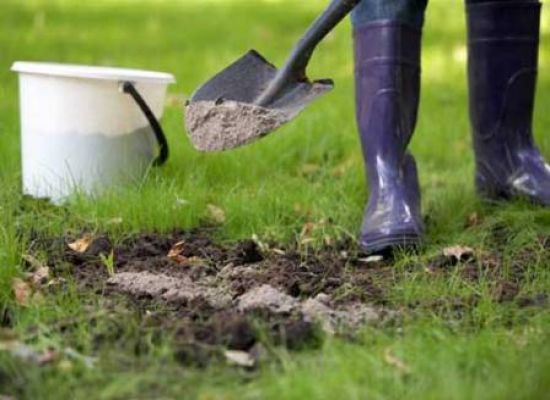
There are a few basic rules to keep in mind:
- When planting vegetables (cucumbers or zucchini), it will be enough to add literally a couple of tablespoons of the mixture to the hole, but for tomatoes it is best to take three tablespoons;
- To improve the structure of the land, in the autumn (September - early October), subject to the presence of loamy soils, about 200 g per square meter is applied. This feeding will be enough for you for 3-4 years;
- It is ideal to use a solution if there are ornamental plants and flowers on the site that react negatively to chlorine. These include currants, strawberries, raspberries - about 15 g of the mixture should be added per 1 square meter. And if you use ash when planting potatoes, you can increase its yield up to 20 kg from one hundred square meters. Fertilization with ashes of indoor plants is also carried out. For a kilogram of soil, you need to take 1-1.5 tablespoons of ash.
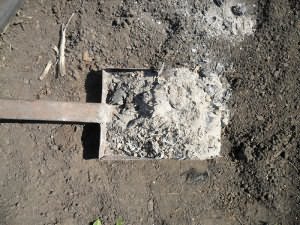
But there are also times when this mixture should not be used:
- As a top dressing when working on alkaline soil;
- When feeding plants such as blueberries, cranberries, azaleas, camellias;
- Together with nitrogen fertilizing, which include saltpeter, urea, manure;
In no case should you use ash from painted wood, magazines, since it will contain a high percentage of chemical additives.
We fight garden pests with ash
You don't know where else ash is useful: what kind of fertilizer, besides it, can simultaneously help the plant to develop and fight the pests of the garden! In this case, you can see the effect almost immediately.
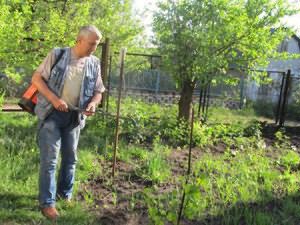
Application methods:
- Spraying. The prepared solution will be able to scare off grape pests such as powdery mildew, aphids, cherry slimy sawfly. Pour boiling water over 300 g of the mixture and cook for half an hour. Then let the broth stand a little, filter it through cheesecloth, dilute it in 10 liters of water and add about 20 g of soap to the solution. Plants should be processed with it no more than twice a month;
- Dusting that should be carried out either in the morning, when there is still dew on the grass, or at lunchtime, watering the plants in advance... Dusting is necessary for your garden, because this way you can scare away snails and slugs, protect berries from gray rot, kill the larvae of harmful beetles in just a couple of days.
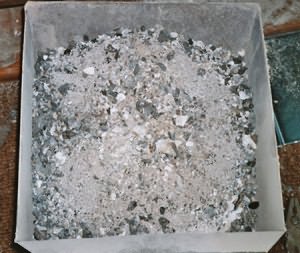
As you can see, ash, as a fertilizer, will allow you to use safe methods both to help the plants grow and to fight the main pests of the garden. When working with this material, you should not forget about the protection of the respiratory tract and eyes, and therefore you should wear a mask.
nasotke.ru
What are the fertilizers
Fertilizers for the garden and vegetable garden. Views
In order for the plants to grow well, they need to be periodically fed with fertilizers containing primarily nitrogen, phosphorus, and potassium.
Everything fertilizers subdivided into organic and mineral. By origin, they can be both natural and chemically obtained.
The most commonly used natural organic fertilizers include compost, manure, bird droppings, and peat. These fertilizers contain all the substances necessary for plants in full. At the same time, when applied to the soil, they improve its structure.
Manure
Manure is a valuable organic fertilizer. It is not recommended to add it fresh to the soil, since it contains substances necessary for plants in an inaccessible form. When manure decomposes in the soil, a lot of heat and gases poisonous for plants are released. It may contain weed seeds. In this regard, the manure must first be milled. For this, fresh manure is stacked and covered with a layer of peat 15-20 cm thick on top and stored in this form for 4-6 months. In some cases, semi-decomposed manure can be used as fertilizer. 10 kg of such manure contains about 50 g of nitrogen, 25 g of phosphorus and 60 g of potassium.
Manure is often mixed with mineral fertilizers before being applied to the soil. For 1 ton of manure add 15-25 kg of simple superphosphate, 50-60 kg of phosphoric flour. The soil is fertilized with manure usually once every 2-3 years. Do this when digging up the site. On 1 m2 of land, 4-6 kg of manure are applied.
Compost
Compost is the best organic natural fertilizer. The finished compost is a dark, homogeneous crumbly mass. Use it as humus. For its preparation, a special area with sides of 1.5-2 m is taken away.The top layer of soil is removed to a depth of 20 cm, the resulting pit is covered with a layer of peat 10-15 cm thick.You can pour another layer of earth 5-10 cm thick. Then stack various organic materials and waste. Each layer 20-30 cm thick is watered with slurry, water, bird droppings are placed there and sprinkled with a thin layer of soil. Can be added to the compost heap and mineral fertilizers. Waste storage is carried out until the heap reaches a height of 1-1.5 m.
In order for the organic mass to rot better, the compost heap is periodically moistened. Every 1-2 months it is shoveled with a pitchfork. In summer, the compost is ready in 3-4 months. It can be used to fertilize garden beds. Wood sawdust and needles decompose very slowly, so the compost from them becomes usable only after 1-2 years.
Bird droppings
Poultry manure is chemically richer in plant nutrients than manure. It takes effect very quickly. In its pure form, it is introduced into the soil only when digging. They do this in spring and autumn. 0.2-0.3 kg of bird droppings are consumed per 1 m2 of soil. To feed the plants, bird droppings are diluted with water. They fill the container 1/3 and fill it to the brim with water. Poultry droppings are insisted for 2-4 days and at the same time they are periodically mixed. Then the resulting fertilizer is diluted with water 3-4 times and used for watering plants. 1-1.5 buckets of liquid fertilizer are consumed per 1 m2 of land.
Alternatively, you can make poultry manure fertilizer. 1-2 kg of bird droppings are bred in a bucket of water. Then they water the rows and furrows at the rate of 1.5 liters per 1 m2. After that, the beds are sprinkled with soil.
Peat
It is impractical to use peat in its pure form for plant nutrition. In peat, nitrogen is in a form that is difficult for plants to assimilate. It contains acidic compounds harmful to plants, therefore it is characterized by high acidity.
Sometimes peat is introduced into light sandy and heavy loamy soils to improve their structure. However, peat acidity is preliminarily neutralized. To do this, add 2-3 kg of lime or 3-4 kg of wood ash to 100 kg of high-moor peat. Low-lying peat is ventilated before use. At the same time, its moisture content decreases and under-oxidized substances are completely oxidized.
Mineral fertilizers
Mineral fertilizers increase soil fertility and improve plant nutrition. They contain mineral salts. According to their composition, they are divided into simple and complex. Simple mineral fertilizers contain one of the nutrients (nitrogen, potassium, phosphorus, copper, etc.). Complex mineral fertilizers contain two or more nutrients. Complex mineral fertilizers are classified according to the amount of nutrients.
How does the lack of chemical elements in plants manifest?
If the plant lacks any important chemical elements, then it starts to hurt. In each case, certain signs appear, by which it is possible to determine which element the plant lacks. The deficiency can be filled with fertilizers (Table 1).
Table 1. Signs of a lack of chemical elements in plants